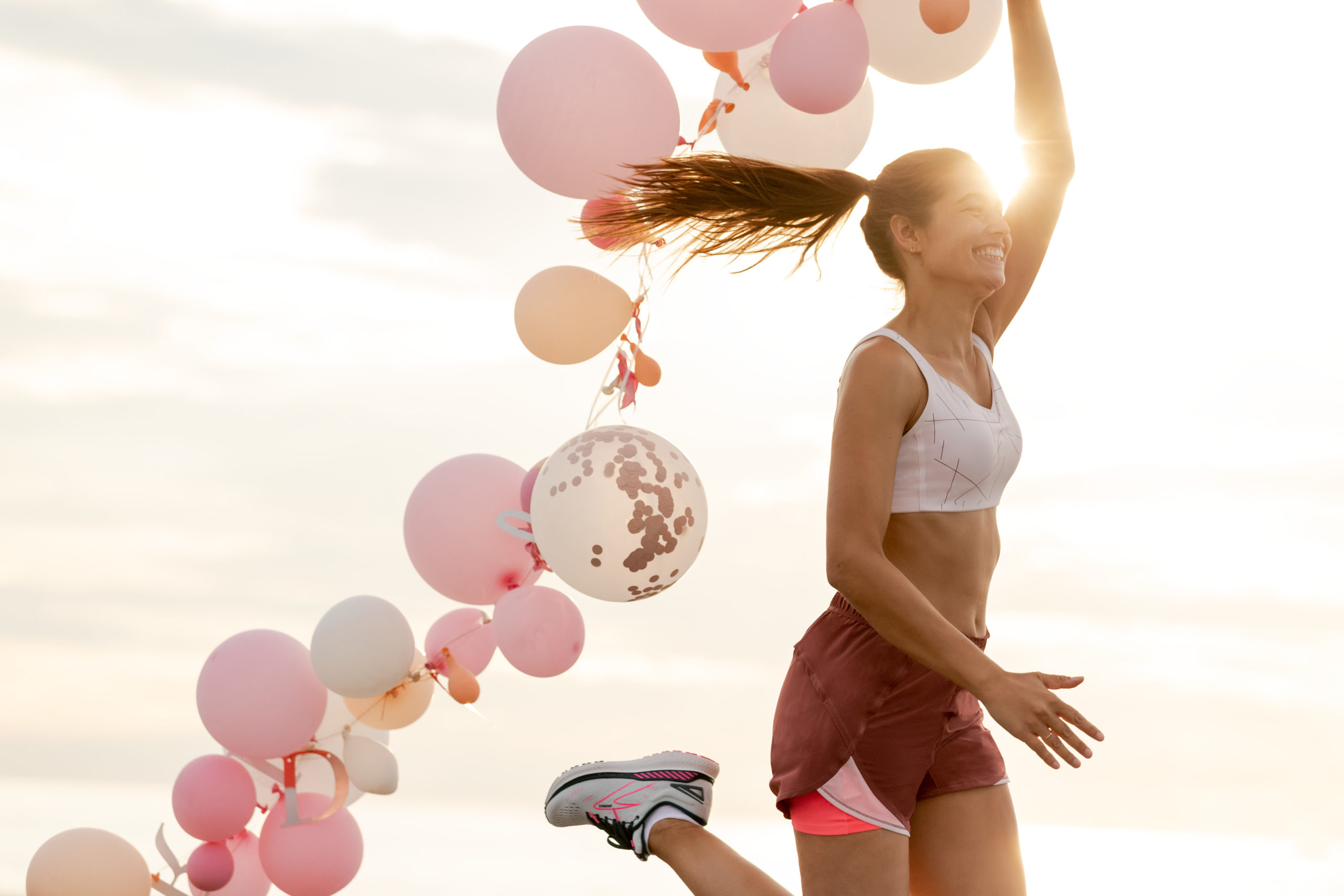Learn how Runfulness is different from a runner’s high and how it can help you find more power in your run.
What is a runner’s high?
You’re 30 minutes into your daily run. The initial stiffness in your legs has worn off, you’re breathing easy, and your stride feels effortless. The scenery around you snaps into focus and the sound of your soles hitting the pavement pulls you into euphoria. This is a runner’s high — a feeling of joy set off by endorphins and other chemicals in your brain.
While we don’t have a full understanding of why we get a runner’s high, the science suggests it’s a trait our ancestors developed to help dull our pain receptors as we ran to catch our dinner or avoid being eaten.
You can typically associate a runner’s high with a reduction in pain, stress, or anxiety and a bump in good feelings during or after physical activity. But since these effects are caused by chemical reactions in the body and all bodies are different, it’s possible that the runner’s high may not happen for you. In fact, many studies show that good percentage of athletes never get it. So while you may hit that feeling of bliss mid-run, your running buddy might never experience it.

What is Runfulness?
While a runner’s high is a set of innate, natural occurrences for some, Runfulness is a learned behavior that can be cultivated on the run.
Runfulness is mindfulness unlocked by running. It’s the effect of a run that’s so good, so freeing, it allows you to forget your feet altogether — taking your mind to places your feet can’t go.
A runner’s high can certainly create some good feels and is an excellent motivator for getting you out on the pavement or trail. It’s all about you and your run. But Runfulness hits differently — its effects expand beyond the run and into your life, your work, or your community. It can spark self-improvement or catalyse plans or ideas that could make the world around you a better place.

For Amy Smith, associate RunSight Lab researcher at Brooks Running, Runfulness is an ever-present reminder that she can do hard things.
“After a particularly tough run, there’s a sense of pride that I pushed past the thick of my own mental and physical inertia to accomplish something good for me. It is a practice in overcoming discomfort in order to do what needs to be done. Over time, running becomes a steady sense of resilience and confidence that blends into other facets of my life,” she said.
We think that just about anyone can achieve Runfulness. To help you get there, we’ll explore this concept in more detail in the months ahead. Watch for stories about how Runfulness inspires grand ideas in runners, how it can affect your emotions, and more.




